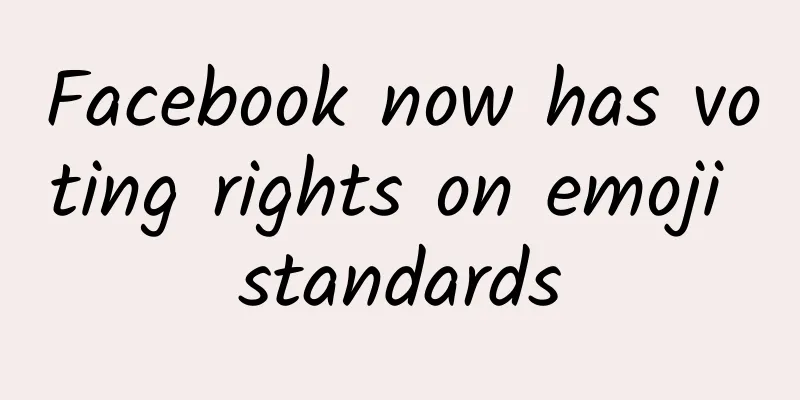iOS welcomes a major update, and apps that secretly collect your information are trembling

|
In the early morning of September 17, Apple pushed its latest mobile operating system iOS 14 in China. The new features include major changes to the home screen, iMessage, privacy policy, and other aspects. It is suitable for older smartphones including the first-generation iPhone SE and iPhone 6S. There is a really important update in this update, which is that it will greatly enhance the protection of user privacy. The Safari browser blocks trackers from tracking users across websites, and an app needs to obtain user permission to use the advertising tracking identifier IDFA (Identifier for Advertising) to collect user data on other apps and websites. This update conveys Apple's determination to protect user privacy. As it said on its official website, "This is not easy, but we believe this is real innovation." Apple's move naturally aroused opposition from a large number of APP developers and advertisers, so Apple decided to postpone the update of IDFA until early next year to "give developers enough time to make necessary changes." What's new in iOS 14's privacy policy? Specifically, the privacy and security updates of iOS 14 are mainly focused on the Safari browser, the App Store, and the switch for ad tracking. According to the official website, in the new system, Safari will prevent trackers from tracking users across websites and generate a privacy report to inform users which websites have tracked and recorded their visit information; the App Store will display the details of the app's use of privacy information before downloading an app, including the app's collection of financial, communication, location, browsing history, and purchase history information; for ad tracking, iOS 14 will actively pop up a window when the APP is used for the first time to remind users whether to allow the app to access identifiers related to physical devices. In the current system version, the ad tracking function is turned on by default, and the option to turn it off needs to be done manually. According to industry insiders, the new version is opt-in (manually choose to turn on), and the old version is opt-out (manually choose to turn off), which is the key difference. IDFA (Identifier for Advertising) is actually a code system for identifying users in the Apple system. Apple requires apps to use IDFA instead of mobile phone numbers and mobile device identification numbers after iOS 6. Compared with mobile phone numbers and mobile device identification numbers that cannot be changed, the improvement of IDFA is that users can choose to change or turn off this code. For example, after a editor from Meike.com browses an electric toothbrush on e-commerce platform A, he or she will see an advertisement for this toothbrush when opening short video app B. This is because these two apps have read your IDFA. The new iOS system has gone one step further. iOS 14 has moved the IDFA shutdown button that was originally hidden deep in the settings function to the initial page every time the user opens the APP, and clearly tells you what personal information will be used. It is expected that more Apple users will choose to turn it off. The "App Tracking Transparency" pop-up window will be added Allowing users to turn off IDFA does not mean that they will no longer receive ads pushed by APPs, but that the accuracy of the ads will decrease. A person's user name, mobile phone number, device identification number of the mobile phone, and the account used to log in to a certain application can all be used as identifiers for advertisements to find target users among the massive amount of information on the Internet. Turning off IDFA only means cutting off the data transmission between advertisers and APPs. It does not mean that APPs will not collect relevant information about users. It just means that APPs cannot send the collected data back to advertisers. In this way, advertisers cannot find the same user between different applications, and cannot adopt targeted delivery to acquire customers, so the accuracy of the ads will decrease. In addition to the above privacy updates, another point worth noting is the front clipboard. Previously, apps on iOS could scan the content copied by users in the clipboard in the background without permission, and this action must be turned off or always on. But now in the iOS14 system, as long as the app scans the clipboard in the background, the system will pop up a window to remind the user. Some domestic users who have updated the beta version mentioned that there are dozens of apps on their phones that are scanning their clipboards. Once they frequently receive pop-up windows from the mobile phone system regarding privacy issues and security, users will obviously become disgusted with those apps. "I'm afraid that some apps will read the clipboard silently, and when the user is not doing anything, a prompt suddenly pops up on the phone, which will cause panic among users," said an employee from the data compliance department of an Internet company. The management of IDFA and clipboard prompts are not all the actions taken by iOS 14 on user privacy issues. If nothing unexpected happens, iOS 14 will also strengthen the protection of user privacy and restrict developer permissions from other levels as planned. One measure is the management of photo album permissions and location permissions. iOS 14 provides users with more options on both apps: users can only provide some photos to the App for reading, instead of the two extreme options of "view" or "don't view"; in terms of geographic location, if users are not happy, they can only provide developers with a vague location; then there are microphones and cameras-if an app is calling these two device permissions, a small yellow dot will immediately appear in the upper right corner of the screen. Many mobile phone users often find themselves talking about an item or thing with their friends in the last second during daily use, and in the next second, when they open an e-commerce platform, they will see related advertising push. Perhaps some apps have secretly turned on the microphone or even the camera of the mobile phone without your knowledge! But now, Apple is making all of this visible. When any app is using the microphone and camera, a small yellow dot will appear in the upper right corner of the screen to remind the user. The update of IDFA and clipboard will undoubtedly have a profound impact on the business models of major apps and advertisers! Even Apple itself said, "This is not an easy task" because it will affect a huge "programmatic advertising" market. Whose interests are affected by shutting down IDFA? Every Apple phone has an IDFA, which is used by major Internet companies to track user behavior and record the number of downloads or purchase conversions obtained from advertising. Advertisers use this to decide how much advertising fees to pay to each traffic platform. IDFA seems to be just a string of codes set by Apple for each Apple device, but it corresponds to a huge "programmatic advertising" market - companies such as Google, Facebook, Twitter, Alibaba, Tencent, ByteDance, etc. are all doing this business. According to media reports, Facebook's advertising revenue reached US$70.7 billion (approximately RMB 482.4 billion) in 2019. In the same year, Alibaba's advertising revenue exceeded RMB 100 billion, and Baidu and Tencent's advertising revenues reached RMB 78.1 billion and RMB 68.4 billion, respectively. In addition, according to the marketing business media platform Morketing, in the first quarter of 2020, the advertising revenue of 22 Chinese Internet listed companies, including BAT, totaled RMB 97.4 billion, accounting for 18.09% of the total revenue. Among them, there are many companies whose advertising revenue plays a vital role in the company's total revenue. Sogou's advertising revenue accounted for as high as 92.37%, Weibo's advertising revenue accounted for 85.20%, Pinduoduo's advertising revenue accounted for 83.96%, and Baidu's advertising revenue accounted for as high as 63.18%. It can be seen that search, social media, e-commerce and other fields are all very dependent on advertising revenue!
According to Caixin.com, Facebook, as another representative of Internet advertising giants, had advertising revenue of $18.3 billion in the second quarter of this year, accounting for more than 90% of total revenue. It has the strongest opposition and has publicly opposed Apple's IDFA policy adjustment on many occasions. Because the Audienc Network occupies an important position in its advertising revenue system. It will affect the monetization and pricing capabilities of Facebook's advertising alliance. A test shows that compared with customized advertising, non-customized advertising revenue may drop by more than 50%. The so-called advertising alliance refers to the leading media using their data advantages to gather together many media resources that lack independent investment promotion capabilities, and push precise advertisements through a unified label system and algorithm. For example, the opening advertisements that users see on a niche video platform may be operated by a well-known Internet company. Facebook uses its top traffic platform to act as a traffic middleman, gather traffic, and then buy low and sell high to make a profit. Such traffic transactions are huge on Facebook. There are more than 19,000 developers and media on Facebook. Although domestic traffic and advertising platforms will also be affected by Apple's privacy policy, domestic Internet giants will not suffer as heavy losses as Facebook for the time being. The primary reason is that Apple's penetration rate in China is relatively low. According to data from the analysis agency Counterpoint, as of the second quarter of this year, the iOS system had a market share of 46% in the United States. According to IDC data, as of the second quarter of this year, the share of iOS systems in the domestic market was only 16.5%. Secondly, more Android operating systems in China have not yet taken similar measures to iOS. Then there are domestic Internet companies such as BAT and ByteDance that have established their own advertising platform systems. Therefore, these reasons have limited the impact on domestic advertisers. How to balance privacy protection and advertising development The tightening of identifiers and privacy protection is a major trend. As people pay more attention to personal privacy and more and more stringent data security regulations are introduced, people will pay more attention to whether they are being "betrayed" by the Internet. Apple's privacy protection policies and implementation have always been a model for the industry. In contrast, Internet companies such as Facebook and Twitter are often sanctioned by regulators for data privacy issues. At present, the international regulatory legislation on identifiers lags behind the development of the industry. Since identifiers are in the hands of hardware device manufacturers, and a large number of APP developers need advertising tracking identifiers to realize customized advertising in order to generate revenue, there is a subtle game between the two. According to iResearch Consulting, the scale of China's mobile advertising market reached 541.52 billion yuan last year, accounting for 83.8% of the overall Internet advertising market. It is expected that by 2022, the scale of China's mobile advertising market will exceed one trillion yuan. How can such a huge digital marketing and advertising industry be balanced under the changing situation of stricter privacy protection supervision? A relevant professional believes that in order to find a balance between privacy protection and the development of the advertising industry, the problem cannot be solved in a "one-size-fits-all" manner. The problem of identifier privacy protection cannot be solved by a single media device. This matter should not be decided by a single company, but should be a unified consensus of the entire industry. Currently, advertising and marketing industry associations at home and abroad are discussing whether there is a "once and for all" solution, that is, to establish a unified identifier that can both protect user privacy and promote the healthy and sustainable development of the advertising industry. Editor | Cheng Peng Du Hengfeng Xiao Yong Proofreader | He Xiaotao |
<<: Future iPhones may use under-screen light sensors to reduce the size of the notch
Recommend
Shooting tips for promoting the TikTok videos that have generated tens of millions of hits!
Our team has recently observed many popular video...
Scientists have a new explanation for this "super confusing" phenomenon in the weight loss world →
For people who want to lose weight, the most frus...
Deloitte: Outlook for automotive suppliers in 2025
Automotive players are facing disruptive times. I...
Why are asthma attacks so deadly? First aid experts explain
Recently, a nurse and an elderly man in Shanghai ...
PC prices are also rising: manufacturers want profits due to component shortages
The decline of the traditional PC industry has no...
Technology Morning News | Man-made spacecraft touches the sun for the first time
News Station Photo by Xinhua News Agency reporter...
[2014 WOT Shenzhen Station Lecturer Interview] Huo Dianyan: New technology is the core value of mobile games
From November 21 to 22, 2014, the 2014 WOT Global...
Product Operation: How to position the product?
Sometimes in the workplace, we encounter products...
Porsche Mission E may be equipped with a new battery pack
According to foreign media reports, Porsche showe...
Global iPhone 6 delivery time list: China's version is fastest
According to foreign media reports, Chuck Jones, ...
Sand onion, a vegetable blind spot for southerners
If you were asked to quickly list the ingredients...
Is financing too difficult? NIO CFO Xie Dongying resigns
Recently, NIO issued an announcement stating that...
FastLun Technology: Who would buy a flying car when you can buy a flying motorcycle at the price of a Tesla?
At the 2025 CES, KuaiLun Technology successfully ...
Product analysis of Kuaishou, Douyin and Weishi!
The article conducts a comparative analysis of th...
How much does it cost to customize the Wuyishan fitness mini program? What is the price for customizing the Wuyishan fitness app?
There are two types of customization for Wuyishan...









![niaoniao's 18th C4D+OC rendering course will end in January 2022 [HD quality with materials]](/upload/images/67cbff58eb0ad.webp)